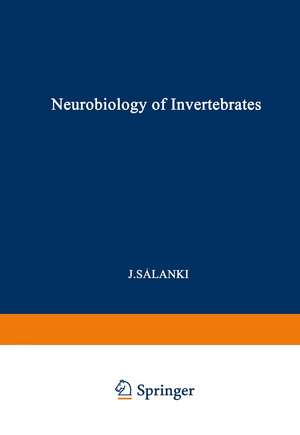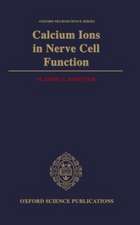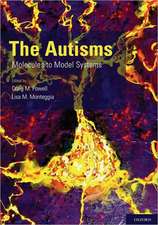Neurobiology of Invertebrates
Editat de J. Salankien Limba Engleză Paperback – 6 feb 2012
Preț: 404.13 lei
Nou
Puncte Express: 606
Preț estimativ în valută:
77.34€ • 80.25$ • 64.64£
77.34€ • 80.25$ • 64.64£
Carte tipărită la comandă
Livrare economică 15-29 martie
Preluare comenzi: 021 569.72.76
Specificații
ISBN-13: 9781461586203
ISBN-10: 1461586208
Pagini: 504
Ilustrații: 502 p.
Dimensiuni: 170 x 244 x 26 mm
Greutate: 0.79 kg
Ediția:1968
Editura: Springer Us
Colecția Springer
Locul publicării:New York, NY, United States
ISBN-10: 1461586208
Pagini: 504
Ilustrații: 502 p.
Dimensiuni: 170 x 244 x 26 mm
Greutate: 0.79 kg
Ediția:1968
Editura: Springer Us
Colecția Springer
Locul publicării:New York, NY, United States
Public țintă
ResearchCuprins
Opening address.- Introductory Remarks.- Technical problems in the study of neuron networks.- Neuromorphology.- Structural, cytochemical and functional organization of statocysts of Cephalopoda.- Structural and functional peculiarities of the synaptic transmission in insects.- The structure of the sympathetic nervous system of insects.- Histochemical and electron-microscopic studies on the relation between dopamine and dense-core vesicles in the neurons of Anodonta cygnea L..- Submicroscopic organization of fibers of the crab’s leg nerves and distribution of a vital dye (Heliogen Blue SBL) on their ultrastructures.- Fine structural changes induced in photoreceptors by light and prolonged darkness.- Synaptic organization of the lobster optic lamina.- The mode of release of neurosecretory material in the freshwater pulmonate Lymnaea stagnalis L. (Gastropoda).- Autoradiographic examination of the distribution of 35S-cysteine in the special and secretory cells of the optic tentacle and tentacular ganglion of Pulmonata.- Processes on Cellular Level.- Ionic background of activity in giant neurons of Molluscs.- Electrical properties and temporal organization in oscillatory neurons (Aplysia).- Synaptic properties of oscillatoryneurons (Aplysia and Helix).- Certain aspects of the pharmacology of Helix and Hirudo neurons.- The action of cholinomimetics and cholinolytics on the Gastropod neurons.- Pharmacological mapping of cells in the suboesophageal ganglia of Helix aspersa.- Electrical properties and connections of CNS giant nerve cells of Hirudo medicinalis.- On the mechanism of anisotropic excitability for the adductor response of glochidia.- Neurohumors and Enzymes.- Evolution of cholinergic transmission.- New steps in studying the mechanism of cholinergic inhibition.-Cyclic 3?,5?-AMP as a second messenger of excitatory influences on the heart of Helix pomatia.- Influence of 5-HT and ACh on the heart of mussels at different temperatures.- The movements of chemicals in snail neurons.- Amines in molluscan nervous tissue and their subcellular localization.- Integration.- The regulating function of the invertebrate nervous system.- Excitation of the receptor cells of the crustacean PD organ.- Sensitization and the evolution of associative learning.- Learning of isolated ganglia of the mollusc Lymnaea stagnalis.- The left and right giant neurons (LGC and RGC) of Aplysia.- Correlation of behavior with the activity of single identifiable neurons in the brain of Tritonia.- Behavioral and neurophysiological investigations of Limulus polyphemus.- Afferent mechanisms of the maintenance of flight in locusts.- Contribution to the study of the function of the nervous system in Nematoda.- Role of cerebral ganglia in the regulation of activity in freshwater mussel (Anodonta cygnea L.).















